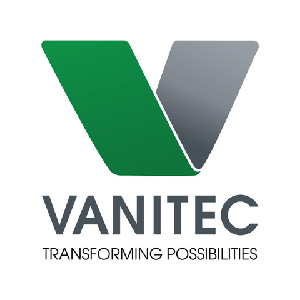
TONBRIDGE, UNITED KINGDOM, 22 January 2021. Vanitec, the global vanadium organisation, has recognised the publication of two articles, entitled ‘Punching Above its Weight: Life Cycle Energy Accounting and Environmental Assessment of Vanadium Microalloying in Reinforcement Bar Steel’ in the Royal Society of Chemistry journal Environmental Science: Processes & Impacts and ‘Building Back Better: Lessons Learned from Sichuan Earthquake on Decarbonizing China’s Construction Industry through Microalloying’ in the Cell Press journal: Matter of Opinion by an interdisciplinary team of researchers at Texas A&M University.
The featured works focuses on the energy and carbon costs of steel-reinforced concrete in the global construction industry, and the potential impact of wider use of vanadium microalloying in the production of rebar.
The addition of even very small amounts of vanadium to steel significantly increases its strength, thereby reducing the amount of steel required in any given construction application. While this has clear economic benefits throughout the construction value chain, these articles are the first to address the sustainability aspects of vanadium use in rebar.
In conducting their assessment, the authors of the articles calculate the potential carbon and energy savings made possible by increased use of vanadium steel in the construction sector.
Initial construction and subsequent use of the built environment represents a significant contribution to the global carbon footprint, so any opportunity to reduce its impact is to be welcomed. The report’s authors arrived at a potential annual carbon saving of up to 0.385% of annual manmade carbon emissions.
“While the utility and economics of vanadium microalloying in rebar are beyond question, it is extremely helpful to have further proof of the value of this metal,” commented John Hilbert, CEO of Vanitec. “Recognition and empirical proof of the sustainability benefits of wider vanadium use is to be welcomed, as it strengthens the case for more widespread adoption of vanadium microalloying in markets (such as Europe) where this is not prevalent,” he added.
The importance of these articles cannot be overlooked, given the continued importance of the construction industry (both economically and environmentally), which is being driven by the accelerating trend towards urbanisation.
Changes in the rebar standard in China (which came into force in 2018) have mandated improved seismic designs largely through the use of higher-grade reinforcement bar steels that require trace additions of vanadium resulting in an increased demand for vanadium-reinforced steel in the world’s largest construction market. Annual consumption of vanadium in China increased by over 40% following the implementation of this new standard. Of the ~65 500 MT of vanadium used in China in 2019, 95% was went towards steel production. The work featured in Matter clearly demonstrates, the changes in policy have not only fuelled vanadium consumption but also created an increased reliance on higher-strength reinforcement bar steels which offer considerably better seismic resilience and economy of materials use. This clearly demonstrates the potential appetite for vanadium, and suggests that still greater energy and carbon savings can be achieved.
Opportunities to reduce energy consumption highlighted by this study include materials selection and sourcing, building design and deployment and operational (or lifetime) energy usage. Increased use of vanadium microalloying in steel rebar production offers reductions in all three areas. The greatest potential for reducing embodied energy consumption comes in the initial or construction phase. In the China case study, the authors find that that even though CO2 emissions from the industrial process in China increased by 65% between 2005 and 2019, the carbon savings afforded by microalloying of rebar increased by over 2000% demonstrating that trace elements such as vanadium play a critical (and likely underappreciated) role in the decarbonization of some of the most challenging industrial sectors.
Using High-Strength, Low Alloy (HSLA) steel (that is, steel with vanadium microalloying) leads directly to greater economy of materials use, which results in significant energy savings in steel production. Additionally, the ability to co-produce vanadium with steel further contributes to embodied energy savings where vanadium microalloying is used.
The full Texas A&M University articles (which was part-funded by Vanitec) can be downloaded here:
About Vanitec
Vanitec is a global vanadium organisation that promotes the use of, and research into the benefits of, vanadium. Vanitec works to increase awareness of the uses (current and potential) of vanadium and provides resources for vanadium producers, users and other stakeholders.
About the Articles
Punching Above its Weight: Life Cycle Energy Accounting and Environmental Assessment of Vanadium Microalloying in Reinforcement Bar Steel
Pranav Pradeep Kumar1,2,§. David A. Santos3,4, §, Erick J. Braham3,4, Diane G. Sellers 3,4, Sarbajit
Banerjee3,4,*, and Manish K. Dixit2*
*Corresponding authors: banerjee@chem.tamu.edu and mdixit@tamu.edu
1Zachry Department of Civil Engineering, Texas A&M University, College Station, TX, 77843-3255, USA
2Department of Construction Science, Texas A&M University, College Station, TX, 77843-3255, USA
3Department of Chemistry, Texas A&M University, College Station, TX, 77843-3255, USA
4Department of Materials Science and Engineering, Texas A&M University, College Station, TX, 77843-3255, USA
Building Back Better: Lessons Learned from Sichuan Earthquake on Decarbonizing China’s Construction Industry through Microalloying
David A.Santos12PranavPradeep Kumar34Manish K.Dixit4SarbajitBanerjee12
1
Department of Chemistry, Texas A&M University, College Station, TX, 77843-3255, USA
2
Department of Materials Science and Engineering, Texas A&M University, College Station, TX, 77843-3255, USA
3
Zachry Department of Civil Engineering, Texas A&M University, College Station, TX, 77843-3255, USA
4
Department of Construction Science, Texas A&M University, College Station, TX, 77843-3255, USA
For more information, please contact:
Lifa Communications
Sewela Makgolane
E:sewela@lifacommunications.com
C: +27 (0)76 880 9656
Vanitec
John Hilbert
E: John.Hilbert@vanitec.org